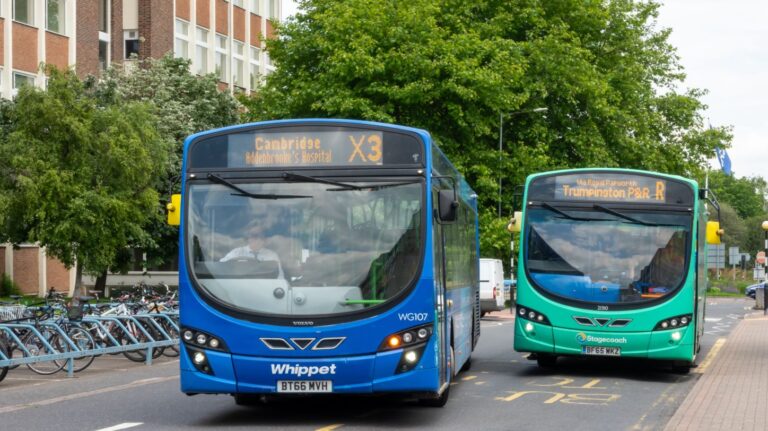The UK Department for Transport’s (DfT) final evaluation of the £2 bus fare cap scheme has found that the initiative contributed to an estimated 5% increase in bus patronage in England outside London.
This was part of an overall 13% year-on-year increase in bus travel between January and October 2023, with the cap playing a role alongside post-pandemic recovery and other local transport investments.
The fare cap, introduced on 1 January 2023, was designed to make bus travel more affordable and encourage greater usage. It ran until 31 December 2024, after which it was replaced by a £3 cap for 2025.
Conducted by Frontier Economics and Systra, the evaluation assessed the scheme’s first 10 months, examining its impact on affordability, modal shift and the cost of living.
The report found significant variation in who benefited. Bus operator data suggests the scheme reduced the price of single tickets by 27%, but only for those who previously paid more than £2 – accounting for less than half of pre-cap bus journeys.
Survey responses indicated that 67-73% of passengers who previously used other transport modes saved money due to the cap, with financial benefits most pronounced among 16-24-year-olds, urban residents and frequent bus users.
The fare cap also influenced ticket purchasing behaviour, with single ticket sales increasing by 85% during the evaluation period.
Meanwhile, sales of return and daily tickets fell by 34% and 28%, respectively, suggesting some passengers switched to single fares to take advantage of the scheme.
Despite this, most journeys continued to be made using period tickets and concessionary passes, which were unaffected by the cap.
A key policy objective was reducing the cost of living, and 40% of survey respondents reported saving money as a result.
Around 30% stated that the cap had positively affected their disposable income, with focus group participants in rural areas noting that it helped offset higher bus fares on longer routes.
Despite these benefits, the evaluation raised concerns about value for money. The benefit-cost ratio (BCR) was estimated at between 0.71 and 0.9, meaning that, based on monetised benefits alone, the scheme’s costs exceeded its economic return.
However, when factoring in non-monetised benefits – such as improved social mobility and affordability for lower-income groups – the overall assessment suggested the scheme may still deliver “low” value for money (BCR >1).
Operationally, around 90% of the market (by patronage) participated in the voluntary scheme, with only minor fluctuations in operator involvement.
However, some bus companies raised concerns about administrative burdens, particularly regarding reimbursement calculations and data requirements. Others expressed uncertainty about how demand would be managed once the scheme ended.
As the £2 cap gives way to a £3 cap in 2025, the UK DfT’s evaluation highlights that while fare reductions can increase bus use and ease travel costs, their long-term effectiveness depends on factors such as service reliability, network coverage and integration with broader transport strategies.
Achievements and innovations in public transport will be recognised and celebrated at the fourth annual CiTTi Awards on 25 November 2025 at De Vere Grand Connaught Rooms in London. Visit www.cittiawards.co.uk to learn more about this unmissable event for the UK’s transportation sector!





